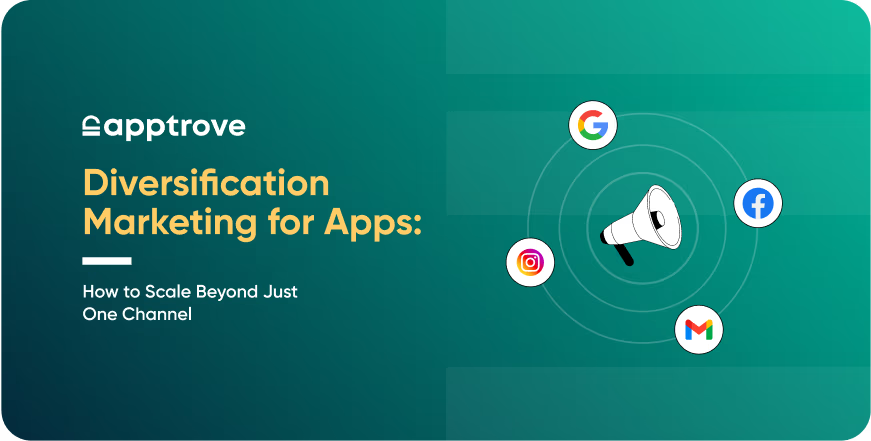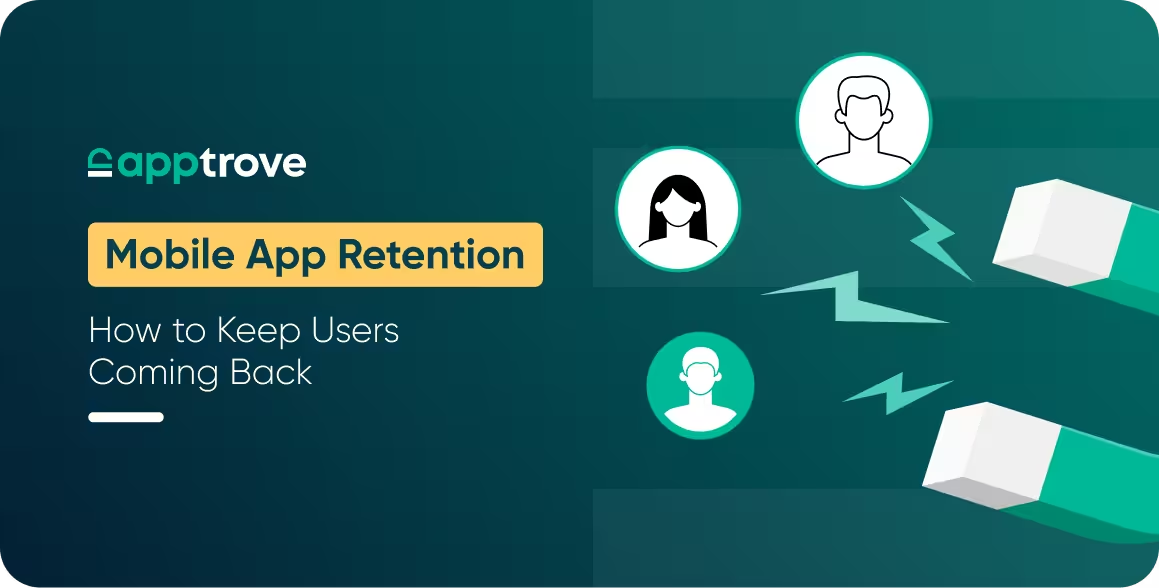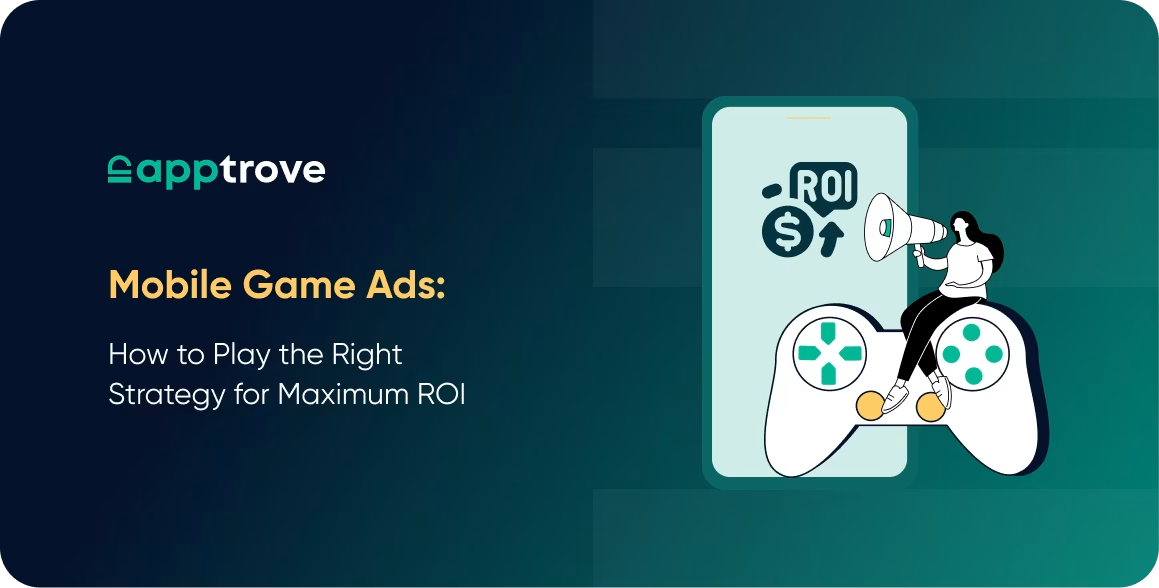If you are putting all your growth eggs in one channel basket, like Meta ads or influencer shoutouts, or even ASO, we need to talk. Because not only is that strategy high risk, it is also not sustainable and it’s a recipe for stagnation.
In a climate where privacy updates break attribution, algorithm changes occur in the blink of an eye and user behavior shifts quicker than app store rankings, one channel is like building your house on sand. This is why the idea of diversification marketing is a must.
Whether you’re scaling a breakout hit or trying to reignite a plateauing app, this is your guide. This blog is an exploration of how app-first teams can build a more intelligent, future-proof growth engine that is not driven by platform change or hit hard by an algorithm. So, if you’re trying to figure out where the revenue actually comes from beyond shiny metrics, Apptrove has all the answers for you.
What is Diversification Marketing?
Diversification marketing is basically marketing across more than one acquisition, engagement, and retention channels instead of solely relying on a well-performing way to acquire users. For mobile apps, diversification means looking further than just Meta or Google ads and developing a more comprehensive and spontaneous approach that incorporates both paid and organic, owned and earned media.
It’s most definitely not shiny head-chasing though. Diversifying your marketing channels is about building a channel mix that resonates with your audience and your KPIs, while building a pathway to your growth objectives.
A hyper-casual gaming app developer may choose to focus co-create content with influencers and create polished TikTok creatives, whereas a fintech app developer would be well served by establishing content partnerships, building an SEO-driven education funnel, or looking at opportunities on Connected TV.
A well-executed diversification marketing strategy is less risky, with better ROAS, and greater lifetime value. It effectively allows app marketers to have a level of resilience in the face of platform changes, because let’s be real, when Meta CPMs spike or Apple makes another significant privacy change, we all need a backup.
The Importance of Diversification Marketing for App Teams
Gone are the days when marketing was linear, and app users took predictable journeys. A channel might drive great installs one day, then tank by tomorrow due to an algorithm change or privacy update. If you rely too heavily upon one source for mobile user acquisition (UA), then you are at the mercy of things you have little to no control over. This is when diversification marketing becomes your safety net. More importantly, it provides you with the lever of sustained scaling.
In fact, adopting three or more marketing channels has led to higher returns on ad spend for 73% of brands, showing the effectiveness of a diversified channel approach. By engaging in balanced top-of-funnel (ToFu) sources, and bottom-of-funnel (BoFu) sources, while dynamically allocating budgets, you are also building optionality.
This flexibility gives you more options to stop unproductive campaigns, or scale things that work, without shutting off your entire growth engine. And, as app teams begin their move from vanity metrics to deep performance, diversification marketing can be a mechanism for discovering, and scaling true incrementality.

7 Steps to Master Diversification Marketing for Your App
In order to benefit from diversification marketing strategy, app teams must go beyond surface-level experimentation. It takes a deliberate methodical process, rooted in data. It is a continuous and flexible process that can adapt over time as you grow as a team and change as an audience and industry. Below are seven practical steps that will help you develop an effective diversification strategy for growth and sustainability:
1. Audit Your Existing Channel Dependence
Before you can take the leap to diversify, it’s important to understand where you stand. You need to ensure that you’ve completed a channel audit, like where your installs coming from, or if you are relying too heavily on organics from a single app store.
Apptrove helps marketers visualize these behaviors with attribution and engagement data in one dashboard. Once you have a clear view of your high dependence areas, you can start to look at where you need to diversify first – be that more paid channels, influencer-led engagement, or improving your onboarding flows to help with retention.
2. Build Diversification Around User Intent, Not Just Channels
The best diversification marketing strategies are not about having a presence on all the platforms, but rather addressing the user at each stage of their journey. This means you need to segment your channel mix by intent: what the user is looking for when they see your ad, or have some type of interaction with your brand.
At the top of the funnel, you may use channels like influencer UGC or Connected TV that might literally “walk” the user to download your app. In the middle of the funnel, you might use contextual ad placements and app store keyword campaigns to drive consideration for your app. And then at the bottom, you can use retargeting or referral programs to circle back. When you diversify based on this intent map rather than just adding channels for the sake of adding scale, you will not only have better clarity on attribution, but you will have more qualified users, and have a growth engine built to optimize real outcomes.

3. Don’t Sleep on Underused and Emerging Channels
Diversification marketing is not only about adding another performance marketing channel, but also about pursuing underutilized formats and partnerships. For example, in-app advertising is not just about monetization, you could advertise on ad-exchanges where your app is being advertised inside of other apps. Referral loops still provide huge quantities of high intent low cost users who convert much better than cold traffic. Preloads are impactful for regional growth and offline scaling, even if they do require capital upfront. Even CTV is beginning to be viewed in a performance way, and cost-per-install is becoming increasingly competitive. The main thing is to methodically test new channels and allow the data to inform your decision-making process, rather than gut feel.
4. Run Tests in Agile Sprints, Not Massive Rollouts
Diversifying does not mean spreading yourself too thin. It is encouraged to go for sprint-based experimentation on channels. Instead of on-boarding five new platforms simultaneously; try onboarding one or two at a time, with KPIs. Run 30-day test sprints, compare against benchmarks, and see how it measures in the install-to-subscription flow.
Make sure to stay within the creative strategy and be thoughtful about retention from Day 1 to Day 7, and be prepared to iterate. You are not trying to guess what works, rather it is about creating a repeatable test-and-scale model, so that you can make informed budget reallocations in real-time. This type of marketing agility will be your competitive moat!
5. Measurement Will Make or Break Your Diversification Marketing Play
This is completely irrelevant if you’re not capable of properly attributing success. Once you have surpassed a single-channel strategy, you will be in the land of fractured measurement. If your attribution model is still last-click, or you are dependent on siloed dashboards from each of your ad partners, you’re only seeing a fraction of the overall picture.
You deserve an all-in-one view of attribution, behavior, and monetization, backed by privacy-first models like SKAN, cohort-level reporting, and predictive funneling. Apptrove allows you to look past installs and analyze real outcomes such as trial starts, in-app spends, and churn prevention across every marketing source. This type of visibility helps ensure your diversification marketing is profitable.
6. Creative Needs to Match Channel Language
Every channel has its own dialect. A TikTok-style ad will not convert sitting in a preloaded app placement. Static banners won’t work where interactive formats have become the norm. Diversification marketing is not only a user acquisition strategy; it’s also a creative ops challenge. Every new channel you test means localizing messaging, making format adjustments, and changing what your calls to action will be. The same campaign objective will need different hooks and visuals on different platforms. Rather than use one-size-fits-all creative, adopt a modular perspective. Create templates that can be easily modified. And also measure your downstream metrics, like trial conversions, lifetime value, and uninstalls, not simply your click-through rate.
7. Incrementality: The KPI That Actually Matters
When you scale, you will have to focus on value rather than volume. Not every install is incremental, and not every user journey is linear. Incrementality testing will help explain what your new channels are actually contributing to your growth structure instead of basing it on simply what they advise. This could include geo-holdout tests, cohort-based analysis, and campaign by campaign lift studies.
Incrementality testing helps you discover real incremental and unproductive impact, completely ignore the channels that appear high-performing, since they could be converting from organics and leaving less incremental growth, and your slow ramping channels that seem underperforming could be bringing in users who stay longer and monetize better; all while Apptrove provides you with the barriers you set to understand and access these incrementality takeaways, so you can scale with confidence.
Diversification Marketing Is No Longer a Choice
Channel fatigue, platform saturation, and policy changes are real threats in this app economy. Diversification marketing offers not only safety but a road map for getting bigger. It’s your formula for creating new revenue, and in turn higher-quality users, without new spending and for never getting caught flat-footed by the next update or algorithm tweak. As app marketers adopt a multi-source, high-measurement strategy, the winners will be those with the best playbooks that are usable, de-risked, and agile (rather than the biggest budgets).
Are you ready to see how a more diversified growth strategy could look for your app? Join Apptrove and take the first steps in mapping out your next channel move with!
Frequently Asked Questions
1. What is diversification marketing in mobile app growth?
Diversification marketing refers to expanding your app marketing strategy across multiple channels and platforms to reduce dependence on any one source and improve stability, scalability, and user quality.
2. Why is diversification important for app marketers?
It helps de-risk UA strategies, improves user retention, enhances attribution accuracy, and opens up new growth opportunities, especially in privacy-first environments.
3. How do I know if I need to diversify?
If more than 60% of your installs or revenue come from one channel, you’re likely overexposed and could benefit from diversification.
4. How do I measure success across diversified channels?
Track install-to-event metrics (like trial starts, purchases), monitor retention, and use incrementality testing to assess real impact.






